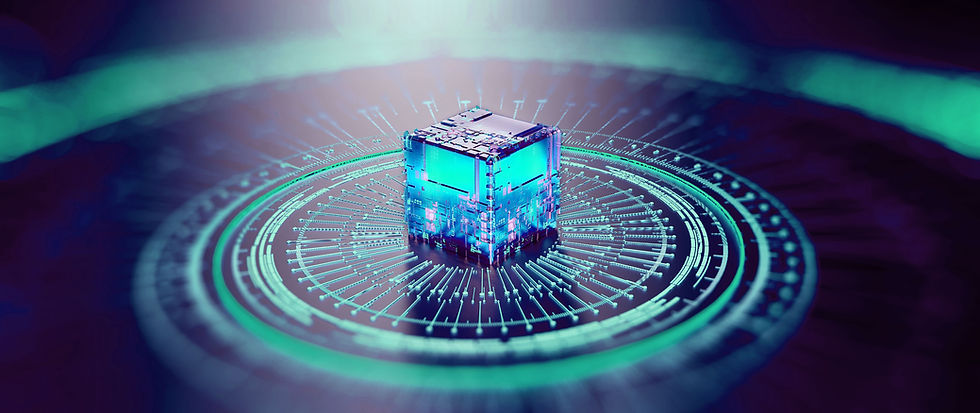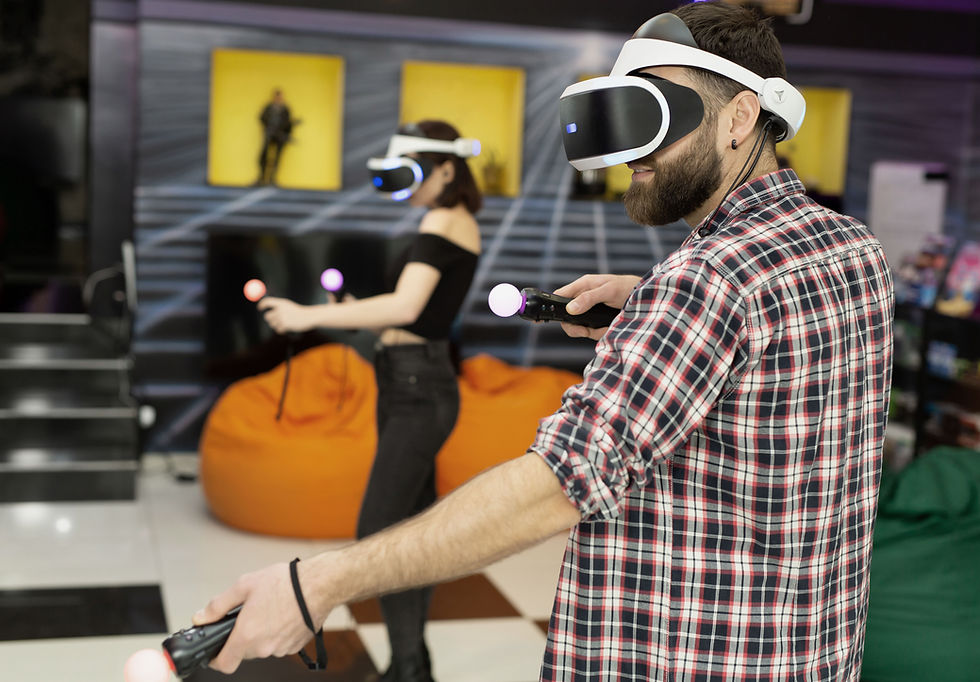Exploring the Horizons: Top Trends in Digital Art for 2024
- Gordita

- May 20, 2024
- 3 min read
Updated: May 26, 2024
The world of digital art is a vibrant, ever-evolving landscape where creativity meets technology. As we step into 2024, several exciting trends are shaping the future of this dynamic field. From new tools and techniques to shifts in artistic themes and expressions, here’s a look at the top digital art trends that are making waves this year.
1. AI-Assisted Creativity
Artificial intelligence is becoming a powerful tool for digital artists. AI-driven software can now generate complex patterns, assist in creating intricate details, and even suggest compositions and color schemes. Artists are using these tools to push the boundaries of their creativity, producing works that combine human intuition with machine precision. This collaboration between human and AI is leading to the creation of unique, innovative art pieces that were previously unimaginable.

2. NFT Art Evolves
Non-fungible tokens (NFTs) took the art world by storm in recent years, and in 2024, their impact continues to grow. Artists are exploring new ways to utilize NFTs, not just as digital collectibles but as interactive and evolving pieces of art. Smart contracts embedded within NFTs allow for dynamic artworks that change over time or in response to external factors. This trend is opening up new possibilities for artists to engage with their audience and add layers of depth to their creations.
3. Mixed Reality Experiences
The convergence of virtual reality (VR) and augmented reality (AR) is creating immersive art experiences like never before. Digital artists are designing VR environments where viewers can walk through and interact with their art, blurring the lines between the digital and physical worlds. AR is also being used to overlay digital art onto real-world settings, making art accessible in everyday environments. These mixed reality experiences are transforming how art is consumed and appreciated.

4. Hyper-Realistic Digital Portraits
Advancements in digital tools and techniques are enabling artists to create hyper-realistic portraits that rival traditional photography. These digital portraits capture minute details, textures, and expressions with astonishing accuracy. Artists are using software like Procreate, Photoshop, and Blender to achieve these results, often incorporating 3D modeling to add depth and dimension. This trend is not only pushing the technical limits of digital art but also expanding its commercial applications in fields like advertising and film.
5. Interactive and Generative Art
Interactive art, which invites viewers to engage with and influence the artwork, is gaining popularity. Digital installations that respond to touch, sound, or motion create a participatory experience for the audience. Generative art, where the artwork is created autonomously by algorithms, is also on the rise. Artists set parameters and rules, and the software generates unique pieces each time. These forms of art challenge traditional notions of authorship and creativity, offering endless possibilities for innovation.
6. Sustainable and Eco-Conscious Art
With growing awareness of environmental issues, digital artists are exploring themes of sustainability and eco-consciousness. This includes creating art that addresses climate change, biodiversity, and the impact of human activities on the planet. Additionally, there is a push towards using energy-efficient tools and platforms, especially in the context of NFTs, to minimize the ecological footprint of digital art production and distribution.

7. Cultural Fusion and Inclusivity
Digital art in 2024 reflects a broader trend towards cultural fusion and inclusivity. Artists are blending elements from different cultures and traditions to create diverse and rich visual narratives. This trend is fostering a more inclusive art world where different voices and perspectives are represented and celebrated. Digital platforms are also providing a global stage for underrepresented artists, enabling them to share their work with a wider audience.
8. Retro Aesthetics and Nostalgia
Nostalgia continues to be a powerful force in digital art. Retro aesthetics, inspired by the visual styles of the 80s and 90s, are making a comeback. Artists are incorporating elements like pixel art, neon colors, and vintage graphics to evoke a sense of nostalgia. This trend taps into collective memories and emotions, resonating with audiences who long for the simplicity and charm of past decades.

Conclusion
The digital art scene in 2024 is a testament to the limitless possibilities that arise when creativity meets technology. From AI-assisted creation and evolving NFTs to immersive mixed reality experiences and hyper-realistic portraits, digital artists are pushing the boundaries of what’s possible. These trends reflect broader cultural and technological shifts, emphasizing sustainability, inclusivity, and interactivity. As digital art continues to evolve, it promises to inspire, challenge, and captivate audiences around the world. Whether you’re an artist or an art enthusiast, keeping an eye on these trends will enrich your appreciation of this dynamic and exciting field.




コメント